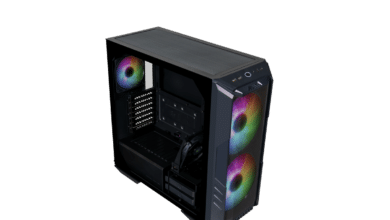
Spyware and other viruses can infect Macs, contrary to what some users claim. If this occurs on your device, you may find that it performs exceptionally slowly. Spyware can also trigger system inconsistencies and app errors, such as issues with your browsers.
But how can you get rid of spyware and grant your Mac a healthy boost? In this article, we’ll go over some of the best ways to remove spyware. Let’s go have a look at them!
Check Your Mac to See If It’s Attacked With Spyware
It’s vital to remember that, apart from other forms of viruses, spyware can readily be fooled for legit software. Though most of them will change your device and configurations as expected, the majority of spyware would not.
Instead, it acts like any other application, monitoring and recording all activity on the target device. This weakens your privacy as the data can be readily copied and utilized for vicious purposes by hackers. Though you might be perplexed about further steps after spyware detection, removing such malware from a device is not difficult. There are some easy yet powerful options.
How Can You Get Rid of Spyware?
Here are some easy steps to follow to prevent spyware on your Mac:
1. Download Antispyware Applications
These tools detect and eradicate spyware from devices, in addition to assuring that your Mac is not compromised. They can also identify and block adware that tries to penetrate your device. Moreover, setting a timetable for the test to boot up will guarantee that you are adequately secured at all times.
2. Make Sure Your System Is Updated
iOS designers continuously create advanced safety measures in response to risks. You can quickly identify and eliminate spyware by upgrading to the latest versions, and your system will be secured.
3. Format, Back-Up, and Restore Your Mac
The harm can be severe in some cases. This may be the situation if the spyware is well-entrenched in the device. In this scenario, you must reset the hard disk and restart the operating system from scratch. However, keep in mind that this technique of eradicating malware is expensive; therefore, it should only be used as a last resort.
4. Open Your App Folder
Look through your Apps folder for any unfamiliar programs. You can unintentionally install malicious programs and data while installing the needed software. These programs may steal your confidential info, professional data, banking information, surfing activity, and other details. Furthermore, this program can sneak into your OS, causing problems in your machine with no consent. Thus, after you’ve scanned your device for any viruses, simply deleting these applications, folders, and files to the trash isn’t sufficient.
You must remove them if you find any. Nevertheless, simply dragging those suspicious files to the bin will not effectively delete them and may leave highly unsafe data. Instead, remove them with a reliable program or by following the app uninstallation process.
5. Check Your Extensions
Most viruses and spyware infiltrate your computer via browser and frequently downloaded plugins. They might also tamper with your site settings to prevent you from removing the extension, though it is exceedingly uncommon. In the majority of cases, removing the Chrome extension is enough to get rid of spyware.
What Should You Do if Spyware is Still Present?
Even if you do the procedures above, there is still a possibility that you won’t be capable of resolving spyware concerns. If that’s the issue, you still have another option: factory reset and return its default settings.
This will remove anything from the computer, including any third-party software. To put it another way, it will restore your device to its previous state. Ideally, this would clear your PC of any malware. And, if you’ve never employed a Memory Machine back up, setting up all from the start might be tedious. As a result, it’s critical to secure your computer from infections ahead of time.
Wrapping Things Up
Hackers are growing more competent and sophisticated, posing a risk to users online. Thus, to enjoy web surfing and online work safely, you should employ the most up-to-date software and powerful anti-viruses to block these threats.



